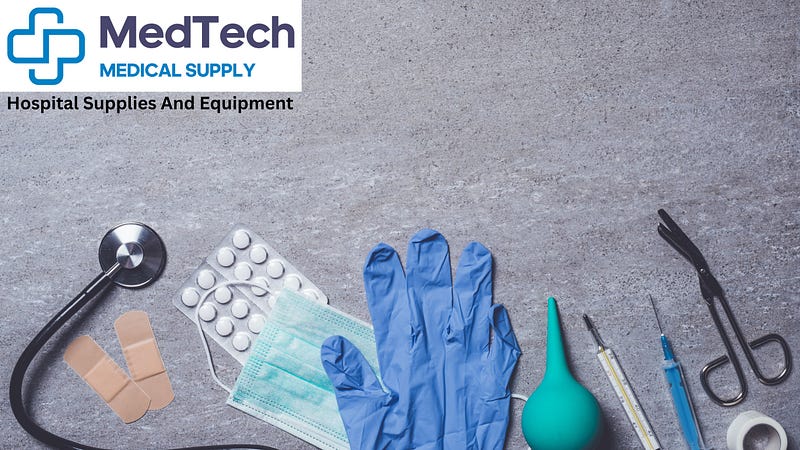In the intricate ecosystem of healthcare, where every second counts and every action matters, the significance of hospital supplies and equipment cannot be overstated. From life-saving tools to essential consumables, these items are the backbone of medical institutions, ensuring that healthcare professionals can provide the best possible care to patients. In this comprehensive guide, we delve into the world of hospital supplies and equipment, exploring their importance, types, challenges, and the crucial role they play in maintaining the standards of healthcare delivery.
Understanding the Importance
Hospital supplies and equipment encompass a vast array of items, ranging from basic consumables like gloves and syringes to sophisticated machinery such as MRI scanners and ventilators. Each of these items serves a critical purpose in the diagnosis, treatment, and management of various medical conditions. Without access to these tools, healthcare providers would be severely limited in their ability to deliver timely and effective care.

Types of Hospital Supplies and Equipment
Hospital supplies and equipment can be categorized into several broad categories, including:
Diagnostic Equipment: These include tools used to diagnose medical conditions, such as stethoscopes, blood pressure monitors, X-ray machines, and ultrasound devices.
Treatment Equipment: This category encompasses equipment used in the treatment and management of medical conditions, such as infusion pumps, surgical instruments, and dialysis machines.
Patient Care Supplies: These include consumable items used in the day-to-day care of patients, such as bandages, catheters, wound dressings, and disposable gloves.
Protective Gear: In light of recent global events, the importance of protective gear like masks, gowns, and face shields has been underscored, serving as a frontline defense against infectious diseases.
Challenges in Procurement and Management
While hospital supplies and equipment are indispensable, their procurement and management present significant challenges for healthcare institutions. These challenges include:
Cost: Many hospitals operate on tight budgets, making it difficult to afford the latest equipment or maintain adequate supplies of essential items.
Supply Chain Management: Ensuring a steady supply of hospital supplies requires efficient management of the supply chain, from procurement to distribution. Disruptions in the supply chain can lead to shortages and delays in patient care.
Maintenance and Upkeep: Sophisticated medical equipment requires regular maintenance to ensure optimal performance. Without proper upkeep, equipment may malfunction or become obsolete prematurely.
Regulatory Compliance: Healthcare facilities must adhere to stringent regulatory standards governing the procurement, use, and disposal of medical supplies and equipment. Non-compliance can result in fines, legal repercussions, and compromised patient safety.
The Role in Ensuring Quality Care
Despite these challenges, hospital supplies and equipment play a pivotal role in ensuring quality care for patients. By investing in state-of-the-art equipment and maintaining adequate supplies, healthcare institutions can:
Improve Patient Outcomes: Access to advanced diagnostic and treatment equipment enables healthcare providers to accurately diagnose conditions and deliver timely interventions, ultimately improving patient outcomes.

Enhance Operational Efficiency: Well-maintained equipment and streamlined supply chains contribute to the efficient operation of healthcare facilities, minimizing downtime and maximizing productivity.
Ensure Patient Safety: Compliance with regulatory standards and the use of high-quality supplies and equipment are essential for safeguarding patient safety and minimizing the risk of medical errors.
Build Trust and Reputation: Patients expect healthcare providers to have access to the latest tools and technologies. By investing in quality supplies and equipment, hospitals can build trust with patients and enhance their reputation within the community.
In conclusion, hospital supplies and equipment are the lifeblood of healthcare delivery, enabling healthcare providers to deliver high-quality care to patients. While procurement and management present challenges, the benefits of investing in quality supplies and equipment far outweigh the costs. By prioritizing the acquisition, maintenance, and proper utilization of these essential tools, healthcare institutions can uphold the highest standards of patient care and ensure positive outcomes for all.

